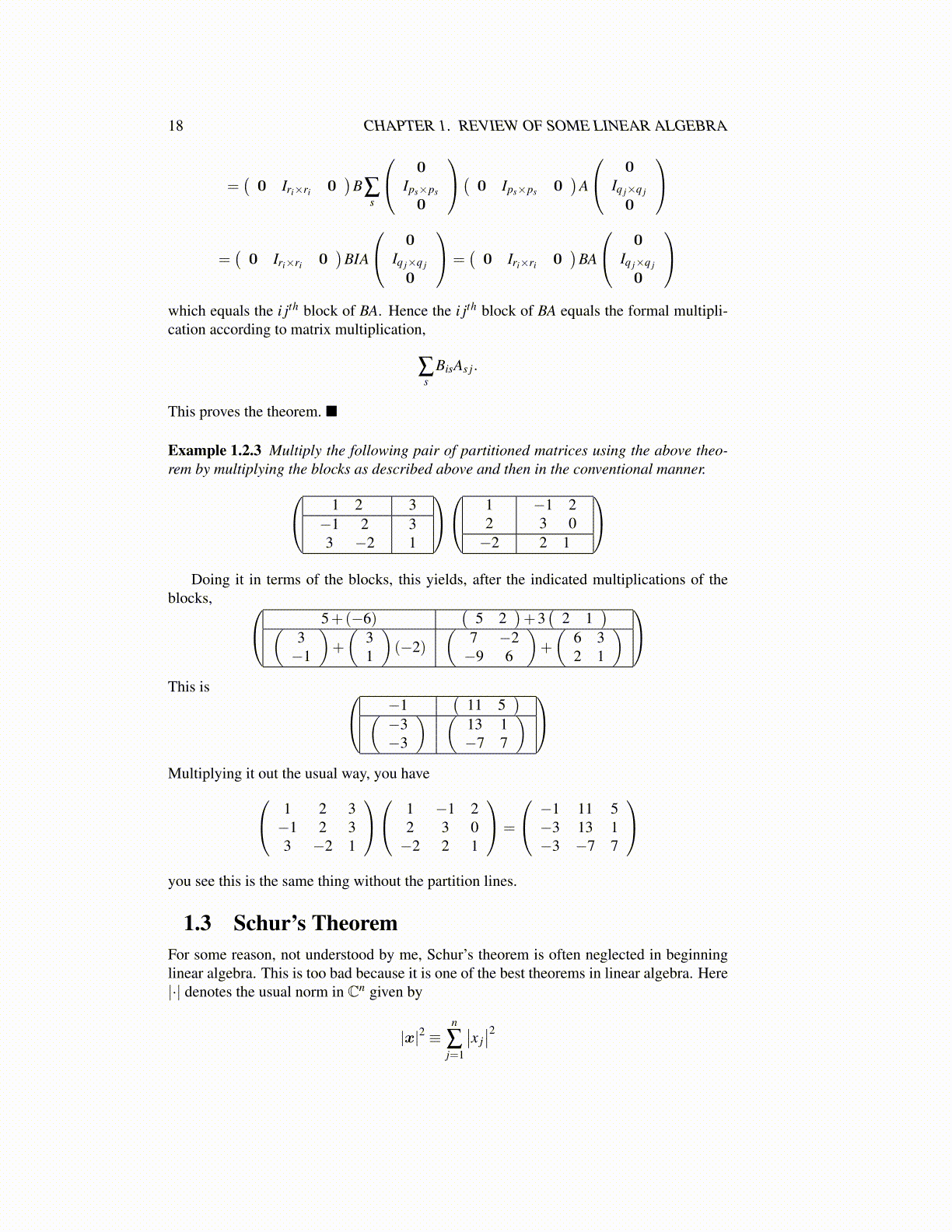
18 CHAPTER 1. REVIEW OF SOME LINEAR ALGEBRA
=(0 Iri×ri 0
)B∑
s
0Ips×ps
0
( 0 Ips×ps 0)
A
0Iq j×q j
0
=(0 Iri×ri 0
)BIA
0Iq j×q j
0
=(0 Iri×ri 0
)BA
0Iq j×q j
0
which equals the i jth block of BA. Hence the i jth block of BA equals the formal multipli-cation according to matrix multiplication,
∑s
BisAs j.
This proves the theorem. ■
Example 1.2.3 Multiply the following pair of partitioned matrices using the above theo-rem by multiplying the blocks as described above and then in the conventional manner. 1 2 3
−1 23 −2
31
12
−1 23 0
−2 2 1
Doing it in terms of the blocks, this yields, after the indicated multiplications of the
blocks, 5+(−6)(
5 2)+3(
2 1)(
3−1
)+
(31
)(−2)
(7 −2−9 6
)+
(6 32 1
) This is −1
(11 5
)(−3−3
) (13 1−7 7
) Multiplying it out the usual way, you have 1 2 3
−1 2 33 −2 1
1 −1 22 3 0−2 2 1
=
−1 11 5−3 13 1−3 −7 7
you see this is the same thing without the partition lines.
1.3 Schur’s TheoremFor some reason, not understood by me, Schur’s theorem is often neglected in beginninglinear algebra. This is too bad because it is one of the best theorems in linear algebra. Here|·| denotes the usual norm in Cn given by
|x|2 ≡n
∑j=1
∣∣x j∣∣2